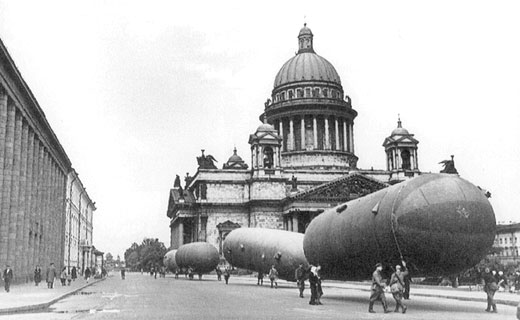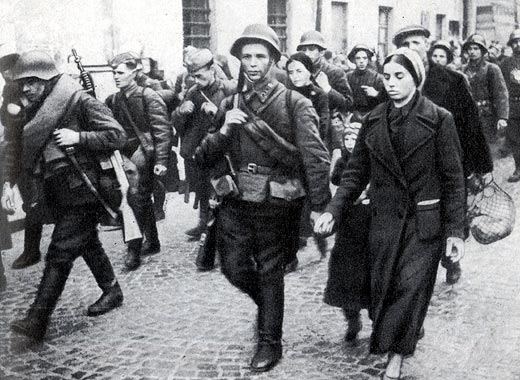
This was undoubtedly the most tragic period in the history of the city, a period full of suffering and heroism. For everyone who lives in St. Petersburg the Blokada (the Siege) of Leningrad is an important part of the city's heritage and a painful memory for the population's older generations.
Less than two and a half months after the Soviet Union was attacked by Nazi Germany, German troops were already approaching Leningrad. The Red Army was outflanked and on September 8 1941 the Germans had fully encircled Leningrad and the siege began. The siege lasted for a total of 900 days, from September 8 1941 until January 27 1944. The city's almost 3 million civilians (including about 400,000 children) refused to surrender and endured rapidly increasing hardships in the encircled city. Food and fuel stocks were limited to a mere 1-2 month supply, public transport was not operational and by the winter of 1941-42 there was no heating, no water supply, almost no electricity and very little food. In January 1942 in the depths of an unusually cold winter, the city's food rations reached an all time low of only 125 grams (about 1/4 of a pound) of bread per person per day. In just two months, January and February of 1942, 200,000 people died in Leningrad of cold and starvation. Despite these tragic losses and the inhuman conditions the city's war industries still continued to work and the city did not surrender.
Several hundred thousand people were evacuated from the city across Lake Ladoga via the famous "Road of Life" ("Doroga Zhizni") - the only route that connected the besieged city with the mainland. During the warm season people were ferried to the mainland, and in winter - carried by trucks that drove across the frozen lake under constant enemy bombardment.
Meanwhile, the city lived on. The treasures of the Hermitage and the suburban palaces of Petrodvorets and Pushkin were hidden in the basements of the Hermitage and St Isaac's Cathedral. Many of the city's students continued their studies and even passed their finals exams. Dmitry Shostakovich wrote his Seventh "Leningrad" Symphony and it was performed in the besieged city.
In January 1943 the Siege was broken and a year later, on January 27 1944 it was fully lifted. At least 641,000 people had died in Leningrad during the Siege (some estimates put this figure closer to 800,000). Most of them were buried in mass graves in different cemeteries, with the majority in the Piskariovskoye Memorial Cemetery, resting place to over 500,000 people and a timeless reminder of the heroic deeds of the city.
Post-war reconstruction
The war was not yet over, but Leningrad had already started to recover from the tragic years of the Siege and all the damage it wrought on the city. Some of the city's museums, such as the Cabin of Peter the Great for instance, reopened as early as 1944. By the time the victorious Soviet army marched back into the city, Leningrad looked fresh and clean, and the ruins of some of its most celebrated buildings had been covered with temporary cardboard walls, in an attempt to depicting their pre-war appearance. The whole city, the whole country, had dreamt of a revival and it did come.
Despite the enthusiasm of the people, a significant part of the national economy was ruined by the war and the population had to endure many more long months of harsh conditions and bleak prospekts. Food rationing was a common feature throughout the 1940s and due to the destruction of 2.8 million sq. meters of city housing and the damage to a further 2.2 million sq. meters, housing became a major problem. Up until the 1960s most of the people Leningrad still lived in so-called "communal" (shared) apartments.
Against all the odds the city was transformed. Unlike many other cities Leningrad was not modernized, but restored to its pre-war Imperial glory. The palaces of Peterhof and Pushkin were almost completely destroyed during the siege and millions of roubles went into their meticulous restoration and reconstruction.
Some of the city's suburban palaces, such as Aleksandrovsky Palace of Nicholas II in Pushkin, still await restoration. Leningrad's museums reopened swiftly the war, having undergone speedy restoration. But a carefully preserved blue Bombardment Warning sign, painted on the side of a building on Nevsky Prospekt, and the green mounds of the Piskariovskoye Memorial Cemetery mass graves still remind us of the tragic past of the city.
The 900-day Siege of Leningrad, Russia (The Leningrad Blockade)

